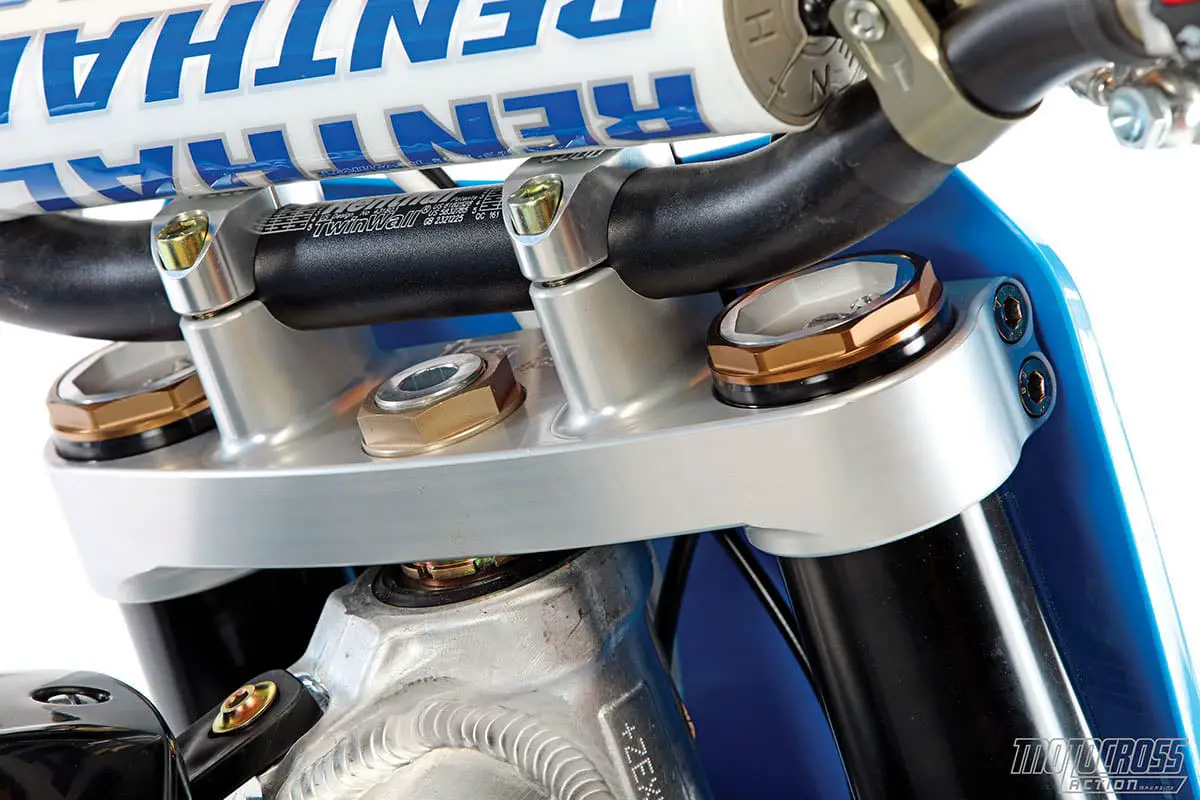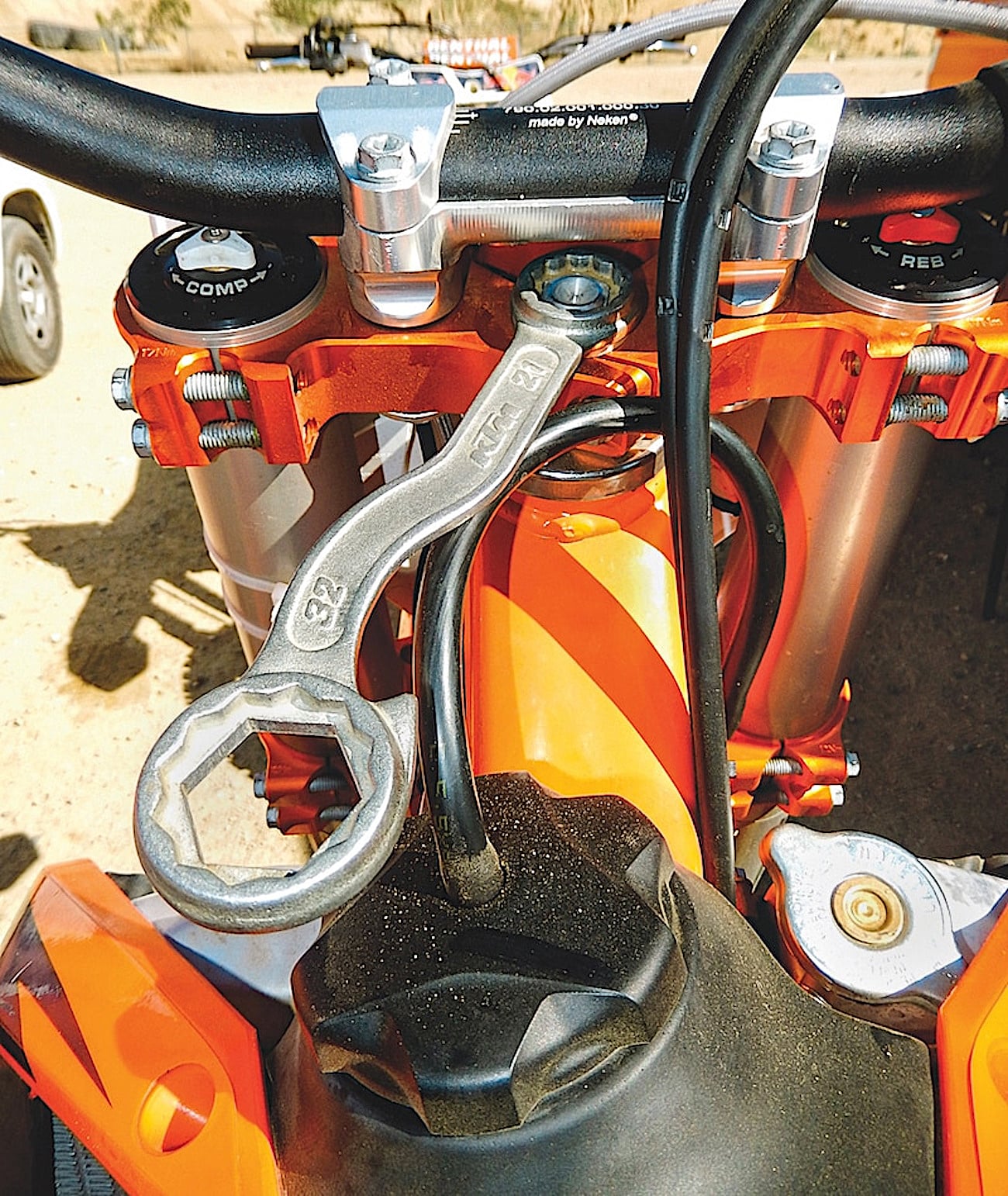MXA TECH SPEC: HEAD-SHAKE & THE POOR MAN’S STEERING DAMPER
Motocross racers talk with hand gestures and guttural noises. It is a primitive language that all racers understand, but suspension technicians and factory engineers don’t. “Brapp” is a foreign language to an Austrian or Japanese mechanic. A test rider’s specialized vocabulary of technical terms and phrases takes the guesswork out of being understood by an engineer who doesn’t race. A test rider’s word choices are similar to the words used by a doctor to turn a “bruise” into a “contusion” or “swelling” into “edema.” Conversely, pity the poor test rider who says “motor” instead of “engine”—unless he’s talking about an electric motor.
There is little call for the average motorcycle racer to invest in the Rosetta Stone of motorcycle-handling lingo when a few hand gestures will suffice in most cases. And, there is one non-technical handling term that every rider knows and understands—head-shake.
Known in the 1970s as a “tank slapper,” head-shake is when the handlebars—and correspondingly the front wheel—start oscillating back and forth. Head-shake is normally associated with speed, but there are bikes, most notably steel-framed CR250s, that suffer severe head-shake under braking.
 Head-shake can be eliminated by sliding the forks down in the triple clamps, which in turns kicks the head angle to reduce head-shake
Head-shake can be eliminated by sliding the forks down in the triple clamps, which in turns kicks the head angle to reduce head-shake
(1) Head angle. If the head angle is too steep, the front wheel will lose some of its self-righting “trail” and will head-shake violently. The solution is to slide the fork tubes down in the triple clamps. The longer fork legs will raise the head tube and produce a slacker head angle, which is less likely to shake at speed. Conversely, a rider can change the rear sag to achieve the same thing, but it is easier and more effective to adjust the forks, not the shock.
(2) Fork settings. If your forks are too stiff, they don’t absorb bumps. They bounce off them, and one bounce in the wrong direction is an invitation to oscillation. If your forks are too soft, they will compress too much and skew the head angle radically.
(3) Tire pressure. Head-shake has to start somewhere, and the main culprit is that the front wheel lifts off the ground and then hits the next bump. No problem if you are in control, but if the front wheel is askew, it will snap in that direction and bounce back in the opposite direction. Multiple bumps will keep this swapping sensation going. If your tire pressure is too high (20 psi), the tire will rebound faster. If the tire pressure is too low (10 psi), the tire will bite into the next bump and twist the front end more aggressively. The proper tire pressure for the terrain eliminates this factor.
(4) Steering head bearings. Known as the “poor man’s steering damper,” the steering head bearings can contribute to or lessen head-shake. To test the tightness of your steering head bearings, put your bike on a stand with the front wheel in the air. Turn the bars to the left (halfway to the triple-clamp stop) and let go of them. If the bars fall on their own and it hit the fork stop enough to bounce back, your steering bearings are too loose. Your bars should require a little push for them to fall to the stop—and they should not bounce back.
 If your bike shakes under braking, it require a different solution that if it shakes at speed.
If your bike shakes under braking, it require a different solution that if it shakes at speed.
(5) Acceleration/braking. Ask yourself, do I get head-shake when accelerating or when braking? When you are on the gas, the front end is light. If the forks are too stiff or the rebound is too slow, the front wheel won’t be able to follow the ground. In this case, the wheel will skip off the bumps and then start dancing around.
Under braking, the forks dive deep into their stroke. If the dive is too far, your bike’s head angle will get very steep, the pressure inside your forks will ramp up to the stiffest spot on the fork’s damping curve, and the combination of a steep head angle and stiff mid-stroke valving will start the front end dancing. The solution is to add compression damping to allow the forks to ride higher under braking
(6) Troubleshooting. Sorting out the causes of head-shake can be confusing. Head-shake can be caused by suspension that is too stiff, suspension that is too soft, a chassis setup that is too high in the front, a chassis setup that is too low in the front, a chassis setup that is too low in the rear, or a chassis setup that is too high in the rear, too much air in the front tire, too little air in the front tire, or loose steering head bearings. Don’t panic. Work your way through the problems and solutions one step at a time.







Comments are closed.